Way back in 1997 – a quarter of a century ago – visionary game designer Kazunori Yamauchi and his team at Polyphony Digital transformed the racing game genre on consoles with the launch of Gran Turismo on the original PlayStation.
Now, almost a decade on from the last ‘true’ entry in the series way back on the PS3, Gran Turismo 7 has officially launched on both the previous-gen PS4 and current-gen PS5 and will almost surely turn out to be the biggest racing game of 2022.While fans have been waiting for a true return of the Gran Turismo experience that has helped make the game Sony’s most lucrative franchise, they have at least had the multiplayer-focused GT Sport spin-off to tide them over. With all the features Sport added to the series that fans welcomed with open arms – like a livery editor, a penalty system and even VR support – so many players were left yearning to enjoy that classic single-player gameplay loop once more.
If you’re one of the rare few gamers who has never touched a Gran Turismo game before, it’s important that you know what to expect going in. Ever since GT4 on the PlayStation 2, Gran Turismo games have all had a distinct ‘flavour’ to them. The emphasis is heavily on celebrating cars as if they are an artform, not so much on motorsport and racing itself. From the menus to the music and the idiosyncrasies of the gameplay – down to having the ability to take a trip to the car wash to shine up your model’s bodywork – Gran Turismo is soaked in a rich, indulgent atmosphere of luxury, where premium quality and presentation is placed above all else.
Boasting over 420 car models with 97 total circuits across 34 locations with many more to be added after release, Gran Turismo 7 is stacked with content – just as players have come to expect from the series. However, unlike other racing games or hardcore sims, GT7 doesn’t just let you jump right in and do whatever you fancy from the moment the game first boots up.
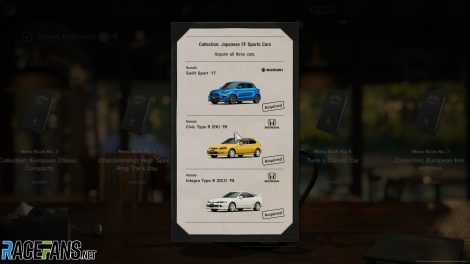
The Café becomes the main hub around which everything you do in the game will be focused. With so many cars available to acquire in the game, the Café aims to take you on a journey through the full breadth of vehicles available. From city-focused compact Japanese cars designed for the hustle and bustle of Tokyo’s sprawling metropolis to the rich history of American muscle cars like Ford’s Mustang and Chevrolet’s Camero, every style and type of car you can think of is celebrated through the single player campaign.
It quickly becomes clear that the entire game is built around car collection. The game’s levelling and progression system is entirely linked to the Café, where your primary mission at any one time comes through Café Menus that are given to you by the game’s NPCs. Each Menu is an objective based around collecting a certain number of vehicles all set to a theme, such as French hot hatches or classic lightweight cars from the sixties such as the Mini or Fiat 500. Satisfy all your objectives and you’ll be treated to a short sequence explaining the history and significance of the cars you’ve just collected before being given the next menu to focus on.
It’s definitely a unique and interesting concept to help guide you through the game’s selection of vehicles, but it’s likely to be a very polarising feature. For a start, everything in the game is linked to the Café. If you want to race at Spa or unlock the ability to customise your vehicles or even race online, you better start fulfilling those Menu objectives.
It also means that the game constantly throws cars at you over the first ten hours. If you enjoyed that old style of progressing in Gran Turismo where you start off with a second hand Mazda MX-5, win a couple of championships with it to earn enough credits to buy something more powerful to race in the next set of championships, you’re going to be disappointed. Here, you will awarded a brand new car almost for every two lap race you do. Within no time at all, you’ll amass quite a collection of modest cars to drive without having to spend a single credit.
Advert | Become a RaceFans supporter and
It does mean that you feel constantly rewarded for everything you do. Whether it’s getting a new car every six minute race, trying your luck with the daily reward tokens for reaching the target of 25 miles minimum driving distance or levelling up your car collection level, it feels like the next reward is literally minutes away. The temptation to just do one more race before calling it a day is incredibly strong and means you’ll feel it’s worth firing the game up even if you have just ten minutes to play.
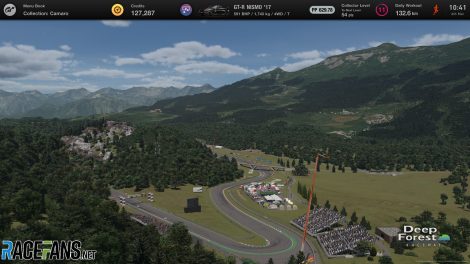
Driving missions also return from GT Sport. Separate to the license tests, they task you with certain objective such as overtaking three cars in one corner or something more interesting like reaching the finish line with minimal fuel. They are just another thing to check off to help earn more credits, but at least they help provide a variety of shorter challenges.
Having so much to do on track would be meaningless if the game’s handling model was not fun to race with, but thankfully GT7 isn’t simply a carbon copy of GT Sport’s physics engine. Cars feel a lot looser in GT7, especially with assists off. While the game’s physics are far, far more forgiving compared to simulators like Assetto Corsa or iRacing, you can’t just slam the brakes and throw the car into the corners and expect to make it through the corner in a lot of cars like you often used to in previous entries.
The addition of wet and changeable weather conditions is a big plus, although it’s disappointing that rain is only available at a limited selection of tracks. You have the ability to look at a real time weather radar during races to warn you about rain fall approaching the circuit, which allows you to make informed decisions about when to risk a switch to dry or wet tyres during a race.
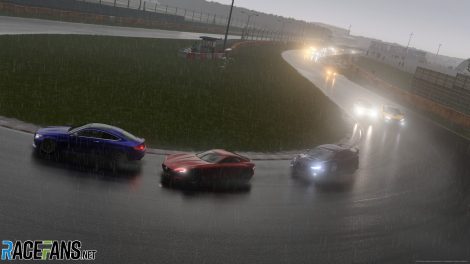
After GT Sport introduced the livery editor, it’s fantastic that it returns in GT7. While largely identical to how it worked in GT:S, there are some minor quality-of-life improvements, such as the ability to edit more of your driver’s racing suit and save favourite colours to a shortlist. There’s already a massive selection of community created liveries, decals and designs to download. Even better, you can even transfer your assets over from GT:S to the new game provided you have actively shared them to the community page to be available to all players. So if you’ve spent many hours crafting together your own design, you won’t have to go through it all again.
Advert | Become a RaceFans supporter and
The customisation goes far beyond liveries, however. With the return of the tuning and GT Auto shops, you now have an exhaustive range of options with which to modify your cars both under the bonnet as well as on the outside. Wide body modification kits, customisable rear spoilers, number plates, headlight bulbs, wheels and tyre stickers, ECUs, turbo kits, gearboxes, roll cages, carbon brakes – you can almost do whatever you want to your cars. Parts don’t come cheap, however, meaning that you might find yourself making a genuine project out of beefing up a little old Daihatsu Copen as your progress through the game.
With all the tuning options comes maintenance. Oil changes, body rigidity, replacing the entire engine with a brand new one – you’ll have to invest in keeping your most used cars fresh the more you use them. Some might find it an annoyance, but it does help to give you a true sense of ownership over your cars and that they are actual cars, rather than just virtual facsimiles.
Presentation wise, GT7 is everything you expect it to be. Especially on PS5. The car models are all meticulously detailed with so much joy to be had from just snapping photos of them in races or with the game’s extensive Scapes mode, which allows you to render your car in actual photographs of real world locations. As the game that pioneered photo mode in the racing genre, it’s little surprise that Gran Turismo offers the very best example of the feature seen in gaming.
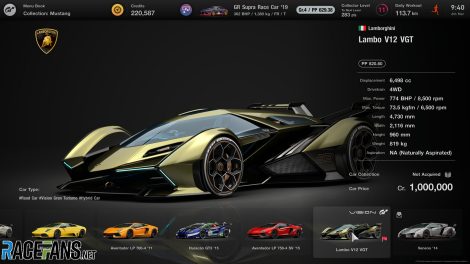
Online, GT’s Sport mode returns to provide esports-level competition for when you want to test your skills against other players. With three different race types rotating every week, there will likely be a car and track combination that appeals to you. If you’re a GT Sport veteran, your driver and sportsmanship rating will carry over into GT7 – meaning that you’ll be placed with opponents who should be just as fast and fair as you from the start. Beyond the competitive side, you are free to set up your own private lobbies or even casual meets, where you can just cruise around the track with friends and practice drifting or work on fine tuning your setups together without any restrictions.
While there is certainly a lot to enjoy about GT7, it’s gotten so hard to ignore some of the frustrating aspects about the game’s formula now it’s reached its seventh iteration.
Maybe the most striking issue is just how weak the core racing experience is compared with so many other racing games on the market. The bulk of races you’ll take part in the single player campaign are incredibly lifeless. You start a two lap race in eighth out of 12 or so opponents, with each car spread two seconds apart with the leader 15 or so seconds up the road and you have to catch them before the end of the second lap. There’s no attempt to emulate how actual motorsport works here. Even those races that feature standing starts follow the exact same three second countdown with the exact same sound effects that GT1 included way back in 1997.
The game’s AI are inherently as robotic as ever. They will back off at the slightest provocation approaching a corner and rarely make any attempt to pass. It takes a huge amount of fun away from the racing side of this racing game and you’ll quickly find yourself just going through the motions just so you can unlock the next bit of content. After 25 years, it’s bitterly disappointing that Gran Turismo has seemingly refused to evolve its core gameplay in any meaningful way.
There’s also the sheer volume of menus you have to navigate through, with no shortcuts offered when they would be most obvious. After you complete a license test, you can’t just skip to the next one straight away. Instead, you have to back out, hop over to the next one and then select it. When you complete a Café Menu, you can’t just use the info bar on the top of the screen to quickly jump to the Café, you have to back out of whatever you’re doing and get back there yourself.
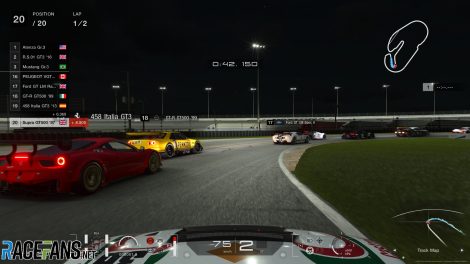
With how much GT Sport evolved over the years as Polyphony added a wealth of new tracks and cars to the game for free after release, with GT7 getting the same treatment, it is also hard to shake the thought that you’re paying £70 at launch for the game when it has its lowest amount of content. A year or two from now, you may well be able to pick up the game on sale with some major upgrades compared to the this initial launch period. So if you’re anxious about dropping that much cash on a game at this point in time, it might be worth being patient. Especially if the rumoured PSVR2 integration comes to fruition.
What’s left to say about Gran Turismo 7 is that it’s an exceptional car game, but not the best racing game available, even on PS5. If you’re a long time fan and the new Café system sounds appealing to you, there’s likely to be plenty of nostalgic fun for you after such a wait for a full GT experience. But if deep and immersive racing action is what you’re looking for, you might want to look elsewhere for now.
Become a RaceFans Supporter
RaceFans is run thanks in part to the generous support of its readers. By contributing £1 per month or £12 per year (or the same in whichever currency you use) you can help cover the costs of creating, hosting and developing RaceFans today and in the future.
Become an RaceFans Supporter today and browse the site ad-free. Sign up or find out more via the links below:
RaceFans rating

Gran Turismo 7
Developer: Polyphony Digital
Publisher: Sony Interactive Entertainment
Published: March 2022
Price: £59.99 PlayStation 4 – £69.99 PlayStation 5
Reviews
Browse all Reviewshttps://news.google.com/__i/rss/rd/articles/CBMibGh0dHBzOi8vd3d3LnJhY2VmYW5zLm5ldC8yMDIyLzAzLzA2L2dyYW4tdHVyaXNtby03LXRoZS1maXJzdC1yZWFsLWRyaXZpbmctc2ltdWxhdG9yLWZvci1uaW5lLXllYXJzLXJldmlld2VkL9IBAA?oc=5
2022-03-06 15:16:50Z
1291383305
Tidak ada komentar:
Posting Komentar